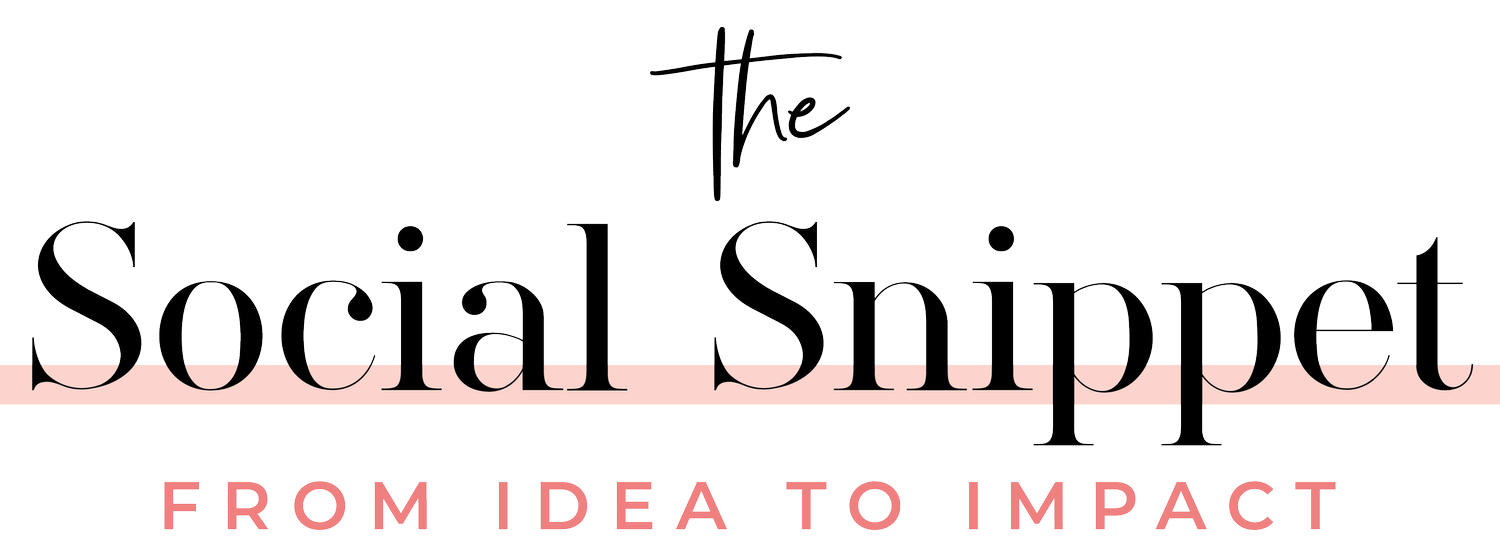Building Your Brand with the P.O.W.E.R Method with Brittany Barnhart
New entrepreneurs often assume that to start a business, you need an idea, a website, and a simple Canva logo. However, establishing a foundation that feels good, makes sense, and is communicated effectively takes far more than just visual branding.
In ‘Build Your Digital Community’ Episode 30 with Brittany Barnhart, owner and brand strategist at Powerhouse Brand Studios, we talk about the importance of community and investing in your brand, taking learnings from her insightful P.O.W.E.R. model.
Brittany’s P.O.W.E.R. Model
P – Identify your purpose
O – Observe your audience and competitors
W – Establish necessary workflows
E – Execute
R – Refine over time
Brittany’s model can be used to build and audit your brand and identify blind spots in your business. You can also use it when you’re starting a new initiative or service. Here are some prompting questions for each step of the method:
Purpose:
This is such a crucial part of establishing your brand story and inviting people into your business. What is the vision that you have for your business? Why is this important? What makes you, what you do, and your business different?
Observe:
How does your brand story connect and relate to your ideal client? What is their story? Dig into their values outside of the work that you do with them AND in the work that you do with them? What’s the risk of them not changing? Why are you the perfect fit for them?
Workflows:
What needs to be built to enact this? What does your messaging look like? What’s your website experience look like? How are you going to filter people into your newsletter? What’s your service funnel?
Execution:
Execution is determined by your goals. For example, let’s say you want to make fifty thousand dollars by the end of the year. You will have different execution goals based on that specific thing you want to accomplish.
Refinement:
This step comes after you launch services or offerings. What worked? What didn’t work? What are metrics that you can test based on the things that were executed? How do you ensure that you’re consistently growing and evolving over time?
What To Focus On Before You Have A Visual Brand Guide In Place
Get clear on what your goal is. What is the purpose of your business?
Ask yourself how you can position yourself as an expert? Showcase your passion in a way that people are actually going to resonate with.
Start to get clear on your ideal client. If you don’t know exactly who you’re working with, what did you need five years ago? How can we speak to that younger version of you? What’s important to them?
What services can you create to filter people in and help build up that momentum while establishing your expertise? Bridge the gap between your services and your audience.
Mess up, try things, see what resonated and what’s working. Look at how you can replicate and continue to make things better. The visual components of your brand are important, but you need to establish your foundation and expertise in order to build the visuals around that.
When we position ourselves as what we do, it is much easier to become a commodity. If we position ourselves as ‘Here’s why I’m passionate about X and why my passion is a vehicle to achieving X,’ it becomes easier to bring people into that community. People pay to be in your energy.
Taking Your Brand Offline
Relationships are needed to build a thriving business. Online platforms are excellent ways to build your audience. However, we would encourage you to nurture your audiences offline, too. Show up in places where your ideal client is. Are there conferences or workshops that you can be in that your ideal client is going to? This will make it far easier to not only connect with them, but also to deeply understand their industry. This means that you will be able to create better messaging, marketing, and offerings to serve that person.
The more that you can cultivate community amongst the greater sphere of business owners and entrepreneurs, the easier it will be to advocate for one another. Pour into your community and get to know them.
The Importance of Beta Testing
People go all in in the most well-intentioned ways. However, for some, this can lead to burn out or feeling overwhelmed. Business owners may find themselves looking too far ahead, comparing their year one to another person’s year ten or fifteen. The reality is, when brands have high ticket items like, for example, a ten thousand dollar coaching program, it has taken time to develop that curriculum, test it, and refine it to achieve a proven process.
There is also this concept that we must have more services in order to sell more versus focusing on one service and making it excellent. It is also okay to have offerings that are low ticket or free and that bring you joy.
Mess up, test things out, see what you want to do. Then you can determine what has worked and what’s not worked. We are all in these seasons of growing together.
It All Starts With An Idea
If you have an idea for a brand or a business, lean into identifying what the ultimate goal for this idea is. In a perfect world, if this were to completely take off, what would you want this to look like? From there, you can reverse engineer it and take baby steps to actually achieve your goal.
Strategy is about exploring all the possibilities. It’s never going to go one certain way. But, if you can explore these different scenarios, you’ll be more prepared to understand the why behind them and what actions need to be taken.
Dream big and write it all done using the P.O.W.E.R. model!

